Star Wars: Episode V - The Empire Strikes Back (PG) ★★★★
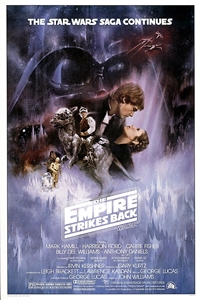 For three years, we waited. As bits of news filtered through the Hollywood grapevine into the trade papers and Starlog, we gobbled them up. Still, by early 1980, not much was known about Star Wars 2 (officially retitled The Empire Strikes Back by the time of its release). Speculation was rampant about the direction it would take but no one expected what the film delivered. Not only did it advance the storylines of the three principal characters but it interjected one of the greatest shocks in movie history. Unless you had it spoiled, there was no way to predict what Darth Vader would say at the climax of his lightsaber duel with Luke.
For three years, we waited. As bits of news filtered through the Hollywood grapevine into the trade papers and Starlog, we gobbled them up. Still, by early 1980, not much was known about Star Wars 2 (officially retitled The Empire Strikes Back by the time of its release). Speculation was rampant about the direction it would take but no one expected what the film delivered. Not only did it advance the storylines of the three principal characters but it interjected one of the greatest shocks in movie history. Unless you had it spoiled, there was no way to predict what Darth Vader would say at the climax of his lightsaber duel with Luke.
It only took four words - "I am your father" - to re-align the Star Wars universe. All these years later, we have become accustomed to Vader's identity. It's no longer a secret. In fact, it formed the basis of the prequels. But, in 1980, this wasn't something any fan had on his or her radar. The Empire Strikes Back was already a great movie by the time the scene arrived some 110 minutes into the proceedings. The revelation took the film to another level and virtually assured that no other Star Wars film, past or future, will surpass it as the best the saga has to offer.
This a dark movie - as dark in its own way as Revenge of the Sith, although perhaps ultimately not quite as bleak. If A New Hope was about optimism and the victory of good over evil, The Empire Strikes Back is about the triumph of darkness. If this was a fight, the Empire would have won by a TKO. Okay, so Vader (David Prowse) doesn't "convert" Luke (Mark Hamill) but he accomplishes pretty much everything else. He finds the Rebel's new hidden base and destroys it. He captures Han (Harrison Ford) and Leia (Carrie Fisher), tortures them, then gives Han to the bounty hunter Boba Fett. He defeats Luke in a lightsaber duel (the one we had been anticipating since Vader and Obi-Wan crossed blades in 1977), takes his hand, and leaves him with an impossible truth. In the end, we're left with our heroes looking toward the future because the immediate past offers no solace.
The ice and snow of Hoth make a welcome contrast to the arid terrain of Tatooine. As The Empire Strikes Back begins, the rebels are hiding out there while star destroyers patrol the galaxy looking for them. Vader eventually figures out where they are and, in a thrilling sequence, a squadron of snow speeders must tackle a group of Imperial Walkers to buy time for the evacuation ships to get away. Leia escapes aboard the Millennium Falcon but, since its hyperdrive is broken, Han is forced to pilot it into an asteroid field to "discourage" pursuit. During a break in the chase, he and the princess make it clear that Luke is the odd one out in this love triangle. Meanwhile, the would-be Jedi has headed for the swamp world of Dagobah for an encounter with Obi-Wan's old teacher, Yoda (Frank Oz), a wizened old creature who sounds suspiciously like Sesame Street's Grover.
The Empire Strikes Back introduces three new significant characters. The most notable is Yoda, the first muppet to show up in the Star Wars universe. As a way of attracting children, Yoda was infinitely more successful than either the Ewoks or Jar-Jar Binks. Lando Calrissian (Billy Dee Williams) gives people of color their own hero in a galaxy that had, to that point, been mostly white. We also get a glimpse of the Emperor. In the original theatrical release, this spectral being was played by Elaine Baker using the voice of Clive Revill. However, for the Special Edition, Lucas understandably shot new footage using Ian McDiarmid (complete with new dialogue). From a continuity standpoint, this is probably the most important change made to any of the three movies for the re-releases.
The Empire Strikes Back is engrossing from start to finish. At the beginning, of course, we're just excited to see new material featuring the characters we came to love in Star Wars. Their ongoing stories go in expected directions at times (Luke seeking training to become a Jedi) but, more often, along unexpected paths. The Han/Leia romance, for example, is counter to what many expected after the events of Star Wars. Most fans believed the farm-boy would end up with the princess. Lucas may have initially thought that as well (consider who gets the kisses in A New Hope) but he changed his mind along the way. The endgame in the Cloud City provides the long-anticipated lightsaber duel between Vader and Luke.
The special effects have taken a quantum leap from what they were in A New Hope, which were far and above the industry norm of the late 1970s. There's nothing in The Empire Strikes Back that doesn't stand up well 35 years later, whether it's the AT-ATs attacking the base on Hoth, the Star Destroyers flying around the galaxy, the asteroid field where the Millennium Falcon plays hide-and-seek with the TIE fighters, the swamps of Dagobah, or the Cloud City of Bespin. Even Yoda, a puppet, is believable. For each of the Star Wars films, Lucas always sought enhancements and improvements in the visual effects department. Without CGI at his disposal, it's amazing that he was able to accomplish the dazzling battles and planetscapes.
Many experts in the field of movie scores have ranked John Williams' work in The Empire Strikes Back as some of the best music he has composed. In addition to re-using the most memorable/popular themes from A New Hope, he introduces three new movements: Yoda's theme, the Han/Leia love theme, and the memorable Imperial March. Williams was in peak form when composing for the second Star Wars film; his work here is more complex and nuanced than what he provided for A New Hope and doesn't show the indications of repetition that became evident in his subsequent scores for the series.
The film's dialogue is stronger than that of any of the other five Lucas-produced films. This may be because the screenplay was written (at least officially) by Leigh Brackett and Lawrence Kasdan. Kasdan in particular is known for his ability to generate strong interpersonal relationships. This was the writer/director's first credit but within five years, he would assemble an impressive resume: Raiders of the Lost Ark, Body Heat, The Big Chill, and Silverado. Dialogue, which one could argue is a weakness of A New Hope, is a strength here.
It also helps that the actors have grown into their roles. Mark Hamill, who had some shaky moments in 1977, is greatly improved in this second installment. His final scenes resonate with emotional turmoil; we can feel his pain. Harrison Ford's cockiness is in full evidence without any of the stilted moments that hampered him in A New Hope. Carrie Fisher's Leia shows a soft, vulnerable side to go along with her spunk. Lucas' decision to bring back Alec Guinness isn't an entirely successful move. It's sad to see the great actor reduced to a shimmering cameo - and even mo
To get the full Quicklook Films experience, uncheck "Enable on this Site" from Adblock Plus
box office top 10
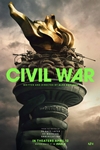
Civil War Released: April 12, 2024 Cast: Kirsten Dunst, Wagner Moura 11.1M
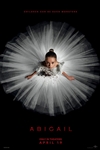
Abigail Released: April 19, 2024 Cast: Melissa Barrera, Dan Stevens 10.2M
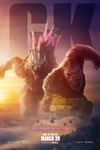
Godzilla x Kong: The New Empire Released: March 29, 2024 Cast: Rebecca Hall, Brian Tyree Henry 9.5M
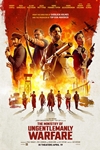
The Ministry of Ungentlemanly Warfare Released: April 19, 2024 Cast: Henry Cavill, Eiza Gonzalez 9M

Spy x Family Code: White Released: April 19, 2024 Cast: Takuya Eguchi, Saori Hayami 4.9M
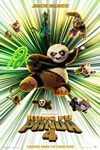
Kung Fu Panda 4 Released: March 8, 2024 Cast: Jack Black, Viola Davis 4.6M
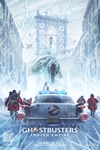
Ghostbusters: Frozen Empire Released: March 22, 2024 Cast: Paul Rudd, Carrie Coon 4.4M
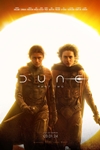
Dune: Part Two Released: March 1, 2024 Cast: Timothée Chalamet, Rebecca Ferguson 2.9M
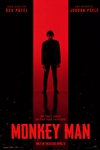
Monkey Man Released: April 5, 2024 Cast: Dev Patel, Sikandar Kher 2.2M
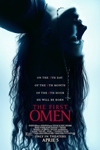
The First Omen Released: April 5, 2024 Cast: Nell Tiger Free, Bill Nighy 1.7M






